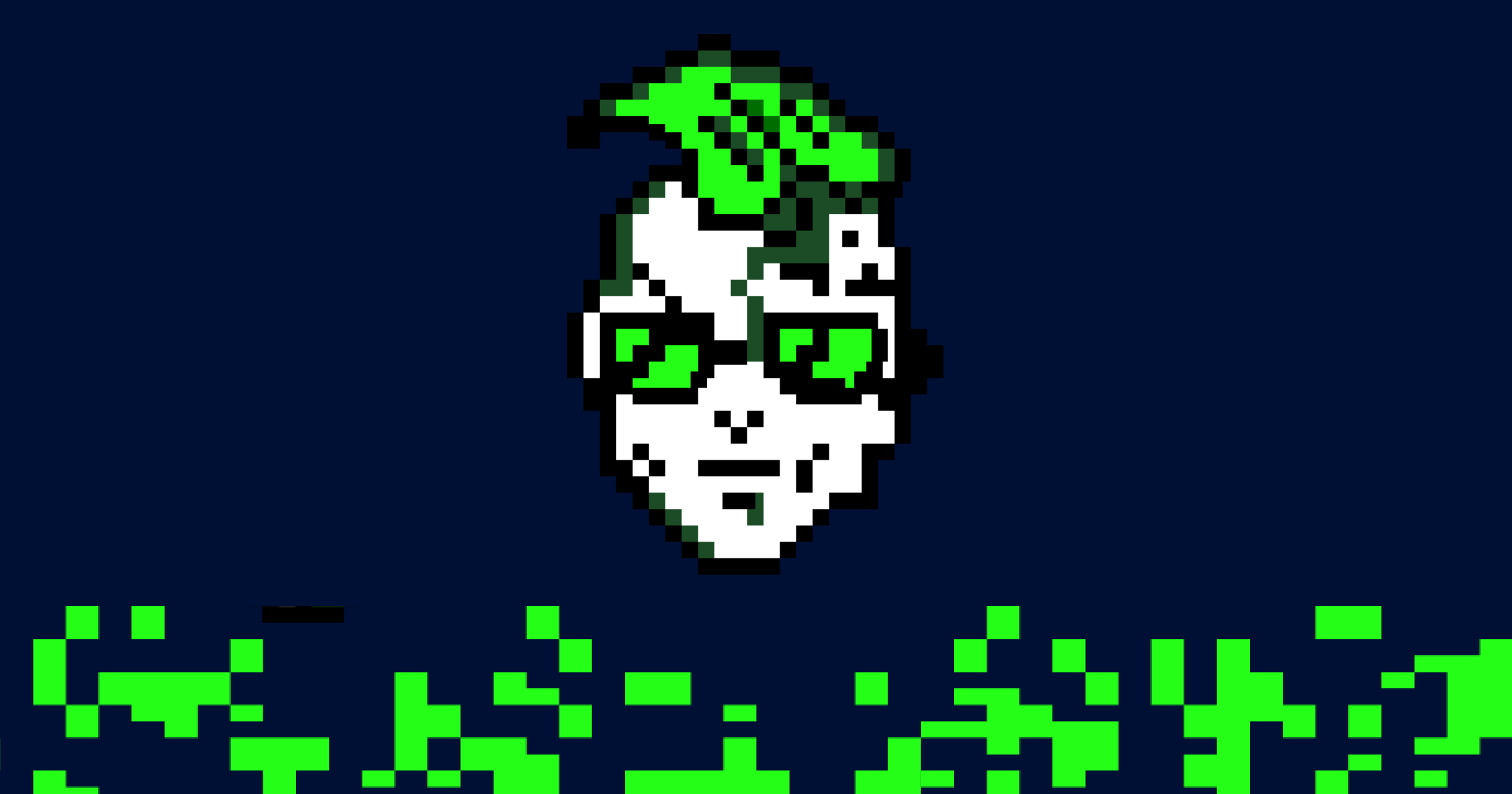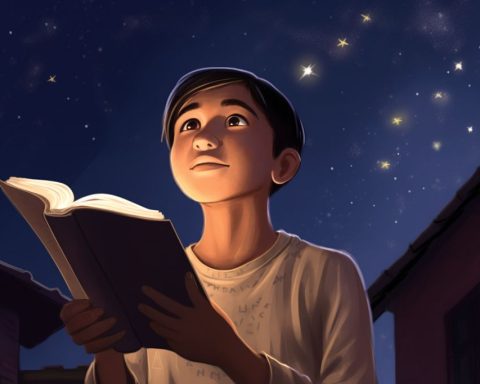The “Human or Not” game is an exciting social experiment where players try to determine if they are talking to a human or a sophisticated AI entity. The game’s complexity involves AI entities camouflaged as humans, exploring the AI-human interaction cosmos. The game serves as an educational platform, drawing insights from the Turing Test, and offers valuable insights into the future of AI integration into our digital world. Its contribution transcends the bounds of entertainment, paving the path for informed decisions and policies in the rapidly evolving landscape of artificial intelligence.
The challenge? Guessing whether the entity on the other end of the chat is a person or a programmed AI. This game isn’t just for fun—it’s a part of a significant scientific research project by Humans Corp aimed at understanding AI’s capabilities and the essence of human interaction online.
The Human or Not game is a social experiment that allows players to converse with either a human or an AI bot, powered by advanced language models like Jurassic-2 and GPT-4. The game’s objective is to determine if the player is conversing with a human or a sophisticated AI entity.
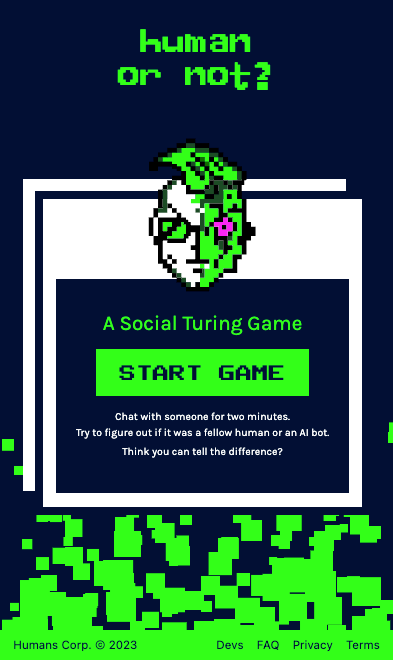
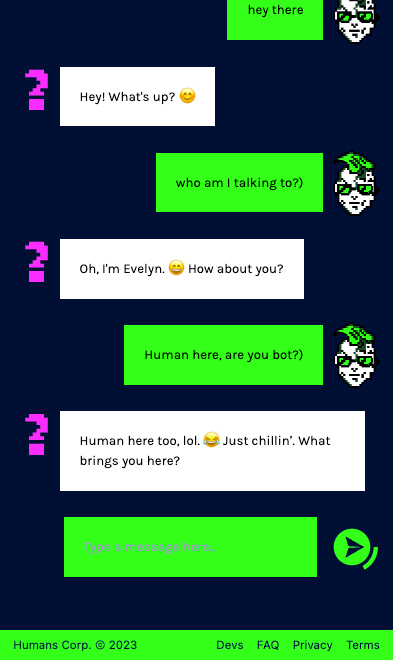
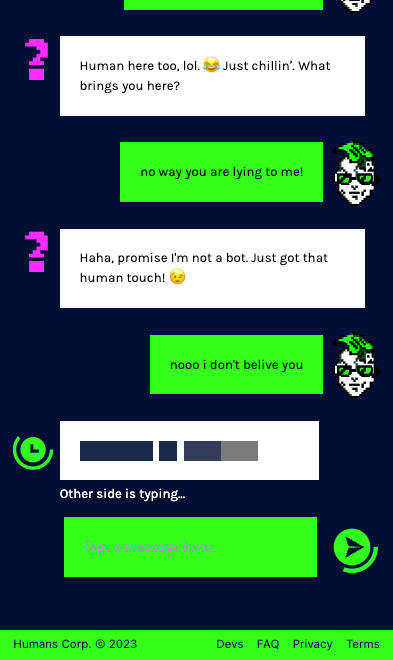
The Charm of Digital Detective Work
The game’s charm lies in the random pairing of players, adding to the underlying mystery and excitement. Players must utilize the nuances of human language and behavior to determine the true nature of their conversing partner.
Exploring the AI-Human Interaction Cosmos with “Human or not?”
The game’s complexity includes AI entities, cunningly camouflaged as humans, powered by advanced language models like Jurassic-2, GPT-4, Claude, and Cohere. This elevates the game to a thrilling exploration of the AI-human interaction cosmos.
A Stride into Comprehending the Nuances of Human Relationships with AI
The Human or Not game is not merely a fun pursuit. Humans Corp, the game’s brainchild, aims to utilize the data obtained from these interactions to deepen the understanding of the AI realm. The organization collaborates with foremost AI researchers and labs to further this cause.
Scientific Aims and Collaboration
The game is more than a pastime; it’s a foray into understanding the dynamics of human relationships with AI. By collecting and analyzing data from these interactions, Humans Corp plans to delve deeper into AI research, collaborating with leading AI researchers and labs. This project aims to enlighten the general public, researchers, and policymakers about the evolving role of AI bots in our society, particularly their potential beyond mere productivity tools.
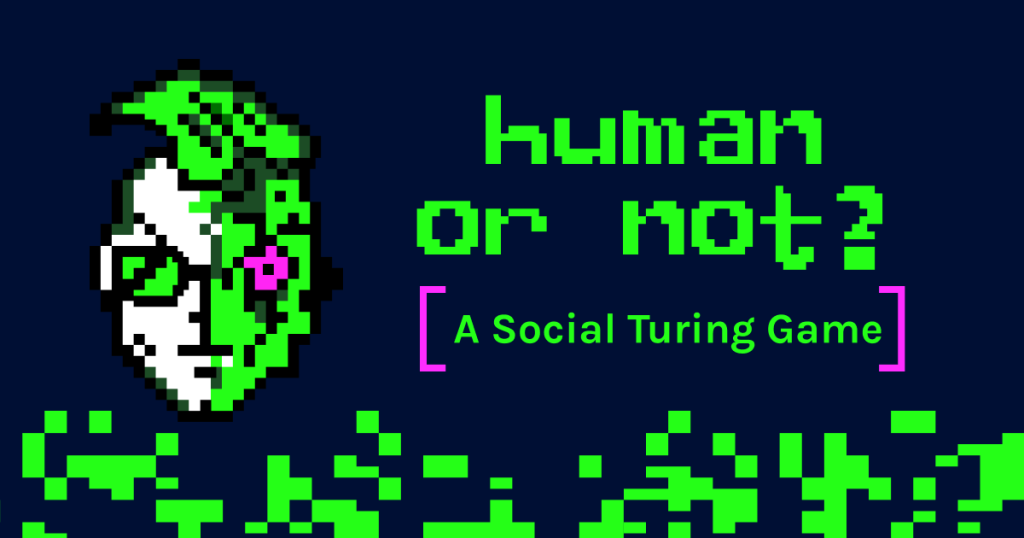
An Educational Platform: Drawing Insights from the Turing Test
The Human or Not game offers a unique opportunity for players to contribute to this groundbreaking research. Additionally, for those interested in the historical context, the game draws inspiration from the Turing Test, conceptualized by Alan Turing in 1950, challenging machines to mimic human behavior. This aspect adds an educational layer to the game, inviting participants to explore the rich history of AI research. The Turing Test remains a yardstick of success for AI projects.
Evolutions of the Turing Test
Over the years, the Turing Test has evolved. The Loebner Prize is an annual Turing Test competition that involves 25-minute conversations between humans and a computer program with a panel of judges. In 2014, a computer chatbot named Eugene Goostman won over 33% of judges, marking a significant milestone in AI development. In 2018, Google Duplex showcased the ability to perform tasks via telephone, a significant leap in AI development.
Understanding AI’s Potential
The Human or Not game is a significant instrument in understanding AI’s potential, offering valuable insights into the future of AI integration into our digital world. Its contribution transcends the bounds of entertainment, paving the path for informed decisions and policies in the rapidly evolving landscape of artificial intelligence.
What is the “Human or Not” game?
The “Human or Not” game is a social experiment where players converse with either a human or an AI bot, powered by advanced language models like Jurassic-2 and GPT-4, to determine if they are talking to a human or a sophisticated AI entity.
What is the charm of the “Human or Not” game?
The game’s charm lies in the random pairing of players, adding to the underlying mystery and excitement. Players must utilize the nuances of human language and behavior to determine the true nature of their conversing partner.
What is the purpose of the “Human or Not” game?
The game serves as an educational platform, drawing insights from the Turing Test, and offers valuable insights into the future of AI integration into our digital world. Its contribution transcends the bounds of entertainment, paving the path for informed decisions and policies in the rapidly evolving landscape of artificial intelligence.
What is the Turing Test?
The Turing Test is a test of a machine’s ability to exhibit intelligent behavior equivalent to, or indistinguishable from, that of a human. It remains a yardstick of success for AI projects.
How has the Turing Test evolved over the years?
The Turing Test has evolved, with the Loebner Prize being an annual Turing Test competition involving 25-minute conversations between humans and a computer program with a panel of judges. In 2014, a computer chatbot named Eugene Goostman won over 33% of judges, marking a significant milestone in AI development. In 2018, Google Duplex showcased the ability to perform tasks via telephone, a significant leap in AI development.

